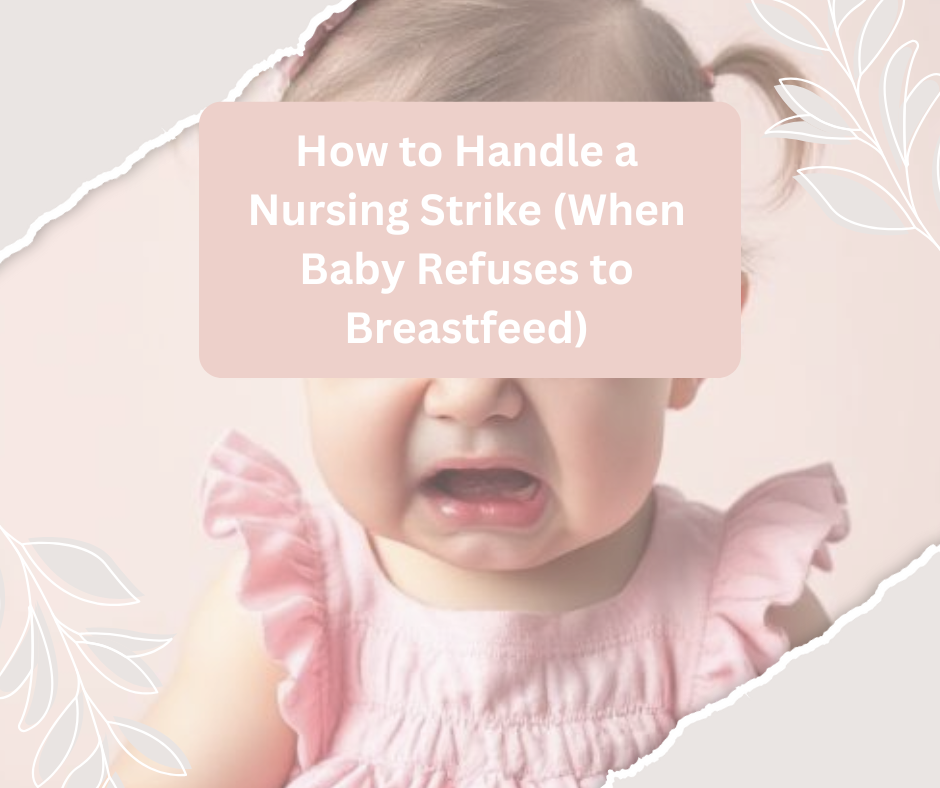
How to Handle a Nursing Strike (When Baby Refuses to Breastfeed)
Share
It’s 2 a.m., your baby is crying, and for the first time… they’re turning away from the breast😔
Panic sets in: What’s going on? Are they weaning? Am I doing something wrong?
Breathe, mama. You’re not alone—and this is more common than you think.
Let’s walk through what a nursing strike is, why it happens, and how to lovingly support your baby (and yourself) through it💕
What Is a Nursing Strike?
A nursing strike is when a baby who has been feeding well suddenly refuses the breast for several feedings or even a few days.
It’s different from weaning—especially if your baby is younger than a year. Strikes are temporary, and with patience, most babies return to breastfeeding.
Common Causes of Nursing Strikes
Understanding the “why” helps you respond with more compassion and less panic. Some common causes include:
- 👶 Teething pain
- Ear infections or nasal congestion
- 🍼 Bottle preference or nipple confusion
- Strong smell or taste from your skin (new lotion, deodorant, etc.)
- 👩Stressful reactions (if baby was startled during a feed)
- Disruptions in routine (travel, visitors, sleep regression)
What To Do (Step-by-Step)
1. Don’t Force It
Pushing your baby to latch when they’re resistant can backfire. Stay calm and comforting instead💗
2. Offer Skin-to-Skin Time
Cuddle shirtless, let your baby rest near your chest, and recreate the safe-feeding bond without pressure. Skin-to-skin resets everything🤱
3. Try a Different Position
Babies in pain (from teething or earaches) may prefer certain nursing positions. Experiment with:
- Side-lying
- Laid-back / reclined nursing
- Football hold
Tip: A flexible, wire-free bra like Bloom & Heal’s makes switching positions easier and more comfortable for both of you.
4. Limit Distractions
Nursing in a quiet, dim room can help your baby refocus—especially around 3-6 months when they become extra curious. 🧠
5. Pump to Protect Your Supply
If your baby continues refusing, pump every few hours to keep your supply steady—and to avoid engorgement or clogged ducts.
Stay Emotionally Grounded
We get it—rejection hurts. But try to remember: your baby isn’t rejecting you. This is just a phase, not a statement about your worth or your bond.
Talk to other moms, journal your feelings, or check out the Bloom & Heal maternity blog for more support and encouragement.
FAQs
Q: How long does a nursing strike last?
A: Typically 2–5 days, but sometimes up to a week. Most babies resume nursing with gentle support.
Q: Should I offer bottles during a strike?
A: If needed to keep your baby fed, yes. Just try paced bottle feeding and continue offering the breast often, without pressure.
Q: Is my baby weaning?
A: Unlikely if under 12 months. Weaning is usually gradual. Sudden refusal = nursing strike.
Q: How can I make breastfeeding feel easier during this time?
A: Comfort is key—use cozy, supportive bras, stay hydrated, and seek emotional support from communities like ours. 💕

















































